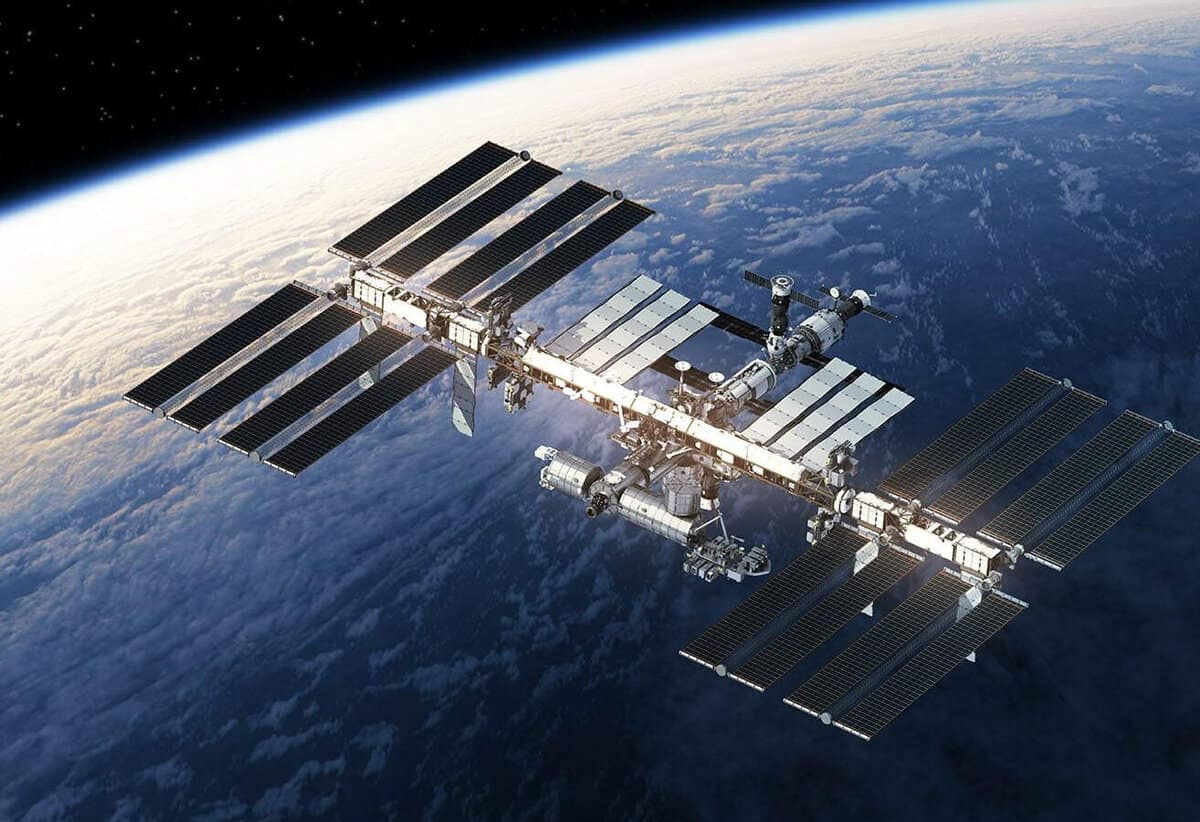In the not too distant past, Russian astronaut Valery Polyakov established a remarkable feat by enduring over a year in space. The progression of technology and the pursuit for novelty has resulted not only in this accomplishment, but also in other extraordinary endeavors. “Hitech” shares the stories of these exceptional triumphs.
Discover “Hitek” in
On September 19, the state corporation “Roscosmos” announced the passing of Valery Polyakov, a pilot-cosmonaut of the USSR, Hero of the Soviet Union and Russia. He holds the world record for the longest duration spent in space during a single flight. Valery Polyakov spent over a year, specifically 437.7 days, on the orbital station “Mir” during his second mission.
On April 12, 1961, humanity witnessed a significant milestone as cosmonaut Yuri Gagarin embarked on an orbit, completing a 106-minute flight high above the Earth. Space, much like any other uncharted territory, has been a constant source of unprecedented events from its inception.
Yuri Gagarin’s achievement remains unparalleled as he became the first human to venture into space. With advancing technology, the possibilities for human exploration continue to expand, resulting in numerous remarkable accomplishments throughout the years.
Record-breaking Space Journey
Valery Polyakov, a cosmonaut from Russia, holds the record for the longest continuous stay in space. From January 8, 1994, to March 22, 1995, he spent an impressive 438 consecutive days aboard the Mir space station. This remarkable achievement remains unmatched for almost three decades. According to Roscosmos, Polyakov’s extensive research during his time in space provided valuable insights into the human body’s ability to withstand not only Earth orbit flights but also deep space missions.
Out of all the space travelers, only three individuals have spent over a year in space, and all three of them completed their missions on the Mir station. Russian cosmonaut Sergei Avdeev, along with Soviet pilots Vladimir Titov and Musa Manarov, spent just over a year on the orbital complex in 1987-1988 and 1998-1999, respectively. Avdeev’s mission lasted for 379.6 days, while Titov and Manarov spent 365.9 days in space.
American astronauts have not yet achieved such a duration. The longest period of time spent in space was by Mark Thomas VandeHei, who was a part of the 64th-66th missions to the International Space Station. He embarked on his space journey on April 9, 2021, alongside Roscosmos cosmonauts Oleg Navitsky and Peter Dubrov.
Following their initial six-month stay on the space station, VandeHei and Dubrov made the decision to extend their stay for an additional six months, eventually returning to Earth on March 30, 2022. In total, they spent a remarkable 353.2 days in space.
On the other hand, the record for the longest duration in space among women is held by American astronaut Christina Koch. During her first and, thus far, only flight in 2019-2020, she spent a remarkable 328.6 days in space, surpassing Peggy Whitson’s previous record by 39.5 days. NASA is utilizing the findings from Koch’s extended mission to investigate the physical, biological, and psychological impacts of prolonged space travel on women.
Contrary to their American counterparts, the number of women involved in domestic cosmonautics is still relatively low. Following Valentina Tereshkova’s groundbreaking flight, only five Russian and Soviet female pilots, in addition to actress Yulia Peresild, have ventured into space. Among these women, Elena Kondakova holds the record for the longest stay in space. From 1994 to 1995, she spent a remarkable 169 days aboard the “Mir” space station.
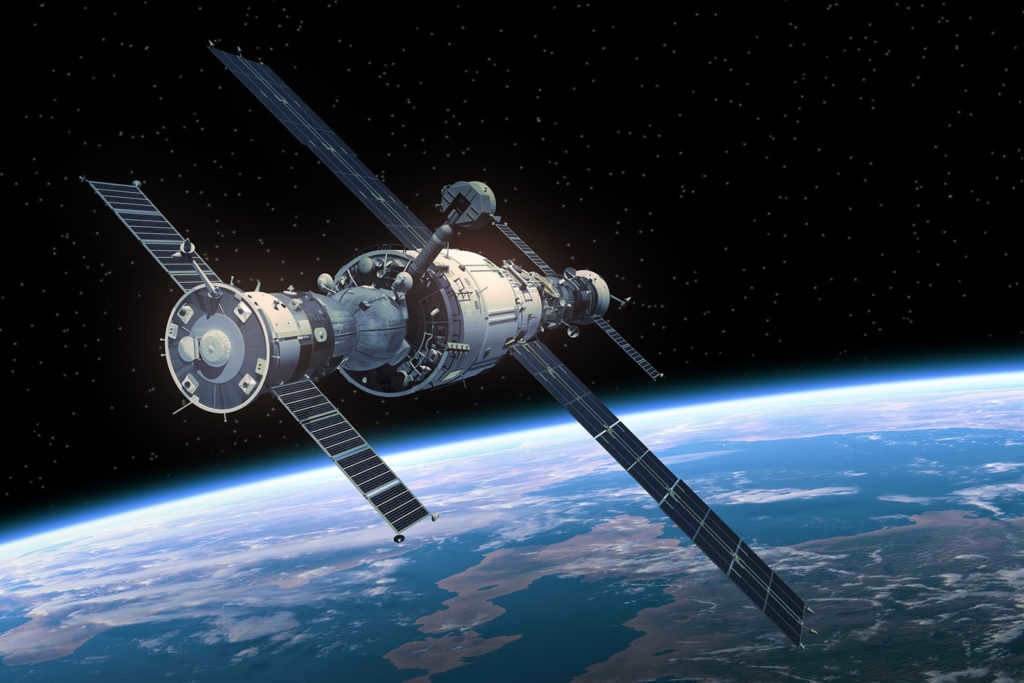
The Person Who Spent the Longest Time in Space
Gennady Padalka, a cosmonaut, holds the record for spending a total of over 878 days in space over the course of five flights. This is equivalent to almost two and a half years (2 years 4 months 3 weeks 5 days) traveling around the Earth at a speed of approximately 28,164 km/h.
Among female astronauts, Peggy Whitson from NASA holds the record for the longest time spent in space, with over 665 days in orbit as of September 2022. Interestingly, this is also the record for the cumulative time spent in space among all Americans.
Unlike Padalka, who has already retired, Whitson is still actively working and may even surpass her own record. She has been selected as the commander for SpaceX’s private AX-2 mission, which is set to send tourists to the International Space Station in early 2023.
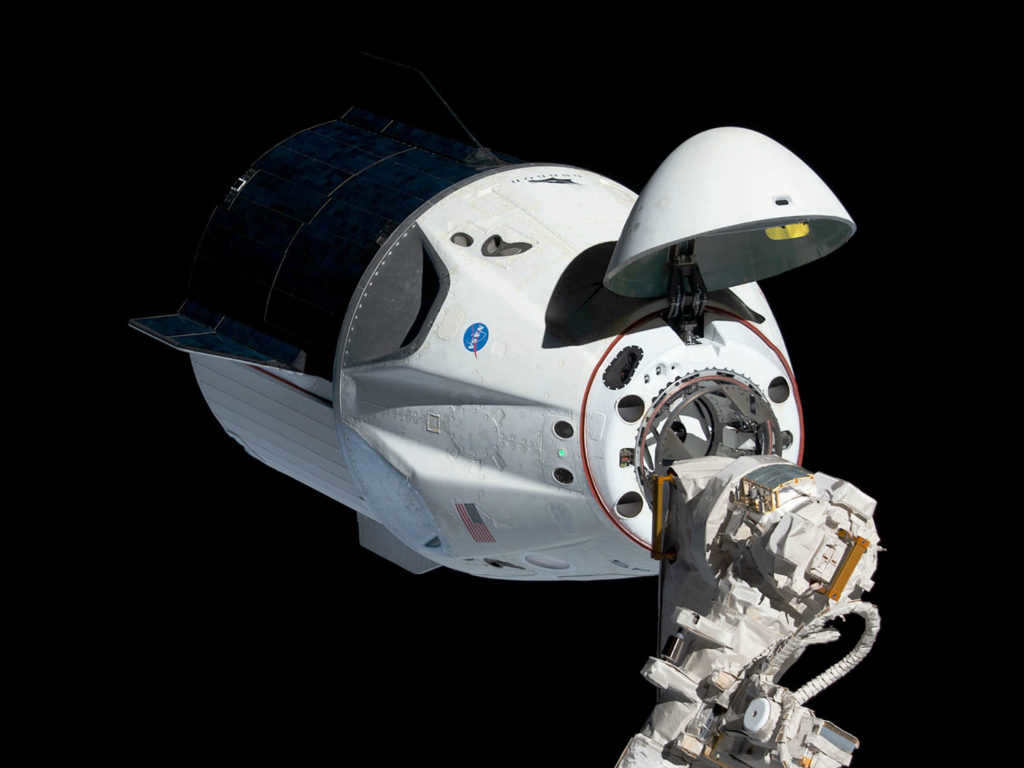
The most “enormous event” in outer space
While only around 600 individuals have ventured into space since the start of the space age, there are occasions when it becomes quite congested. In 2009, 13 people convened aboard the ISS for the first time. Although this number is considered to be an unlucky one, the mission went smoothly.
In July 2009, the space shuttle Endeavor, with a crew of seven, connected with the station where six mission members were already present. Although the station has been crowded during subsequent shuttle flights, the current record has yet to be surpassed.
However, in September 2021, there was a unique situation where 14 individuals were present in Earth’s orbit simultaneously. Despite this, they were all dispersed across various spacecraft and could not convene. This particular occurrence took place during the debut of SpaceX’s Inspiration4 mission, as the four-person crew aboard the Crew Dragon spacecraft joined forces with seven members of the mission stationed on the International Space Station (ISS), along with three Chinese taikonauts positioned on the Tiangong station.
Remarkably, just a few months later in December of the same year, the number of individuals in space surged to 19. However, these individuals were not in orbit but rather at an altitude exceeding 100 kilometers, and their stay lasted only a few minutes. This remarkable event unfolded when the New Shepard spacecraft embarked on a suborbital journey, carrying six tourists on board during a mission transition to the ISS.
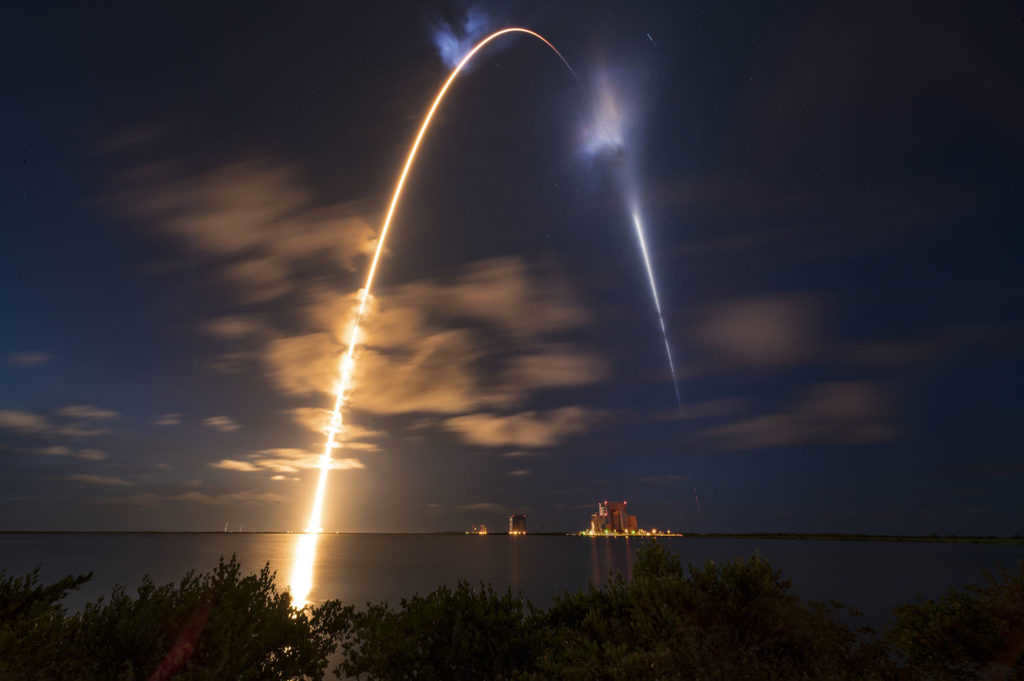
The Most Distant and Longest Stay on an Alien World
The record for the greatest distance from Earth has been held for over forty years. The crew of NASA’s Apollo 13 mission circled the far side of the Moon in April 1970, reaching a distance of 254 kilometers from the satellite. Throughout the mission, the astronauts remained at a distance of 400,171 kilometers from Earth.
In December 1972, Harrison Schmitt and Eugene Cernan, members of NASA’s Apollo 17 mission, spent just under 75 hours – over three days – on the surface of the Moon. To this day, it remains the longest period of time that humans have stayed on an alien world. Additionally, the astronauts completed three lunar excursions, totaling more than 22 hours.
Maybe the astronauts remained on the Moon for an extended period of time due to their suspicion that humanity would not revisit the lunar surface or venture beyond Earth’s orbit in the near future. “Apollo 17 marked the conclusion of NASA’s lunar expeditions.
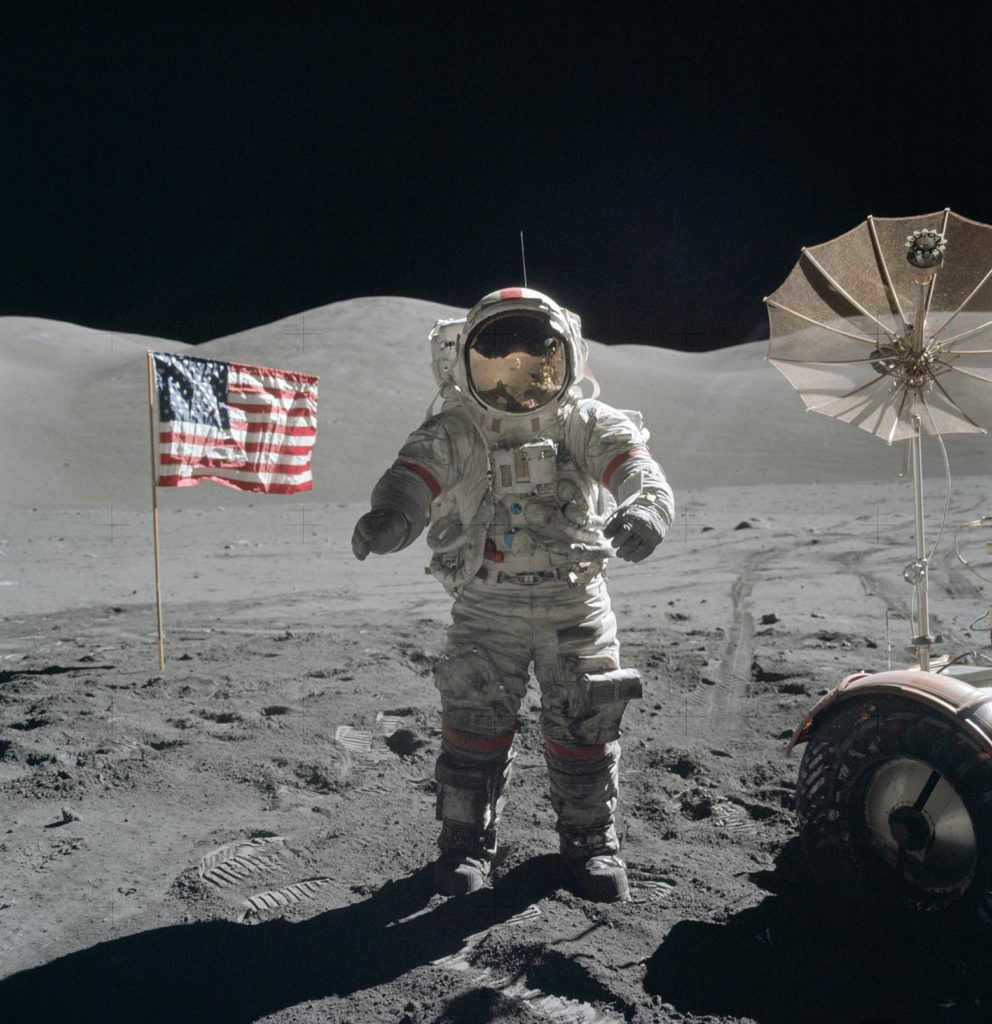
The Artemis mission, set to launch in test mode later this year and with crew next year, is expected to break both of these records. However, the mission will not include a landing on the Moon.
Not only NASA, but also other countries’ space agencies, are actively working towards reopening space for humanity. The goal is to send humans to the Moon, Mars, and possibly other planets or moons in the solar system. If successful, there will be many more extraordinary records to come.
Find out more:

One concept that you might encounter from numerous physicists is the assertion that “time is relative.” This notion was incorporated into Einstein’s theory of relativity. In this theory, Einstein merged time and space into a single entity and introduced the concept of “time-space,” which permeates the entirety of our universe.
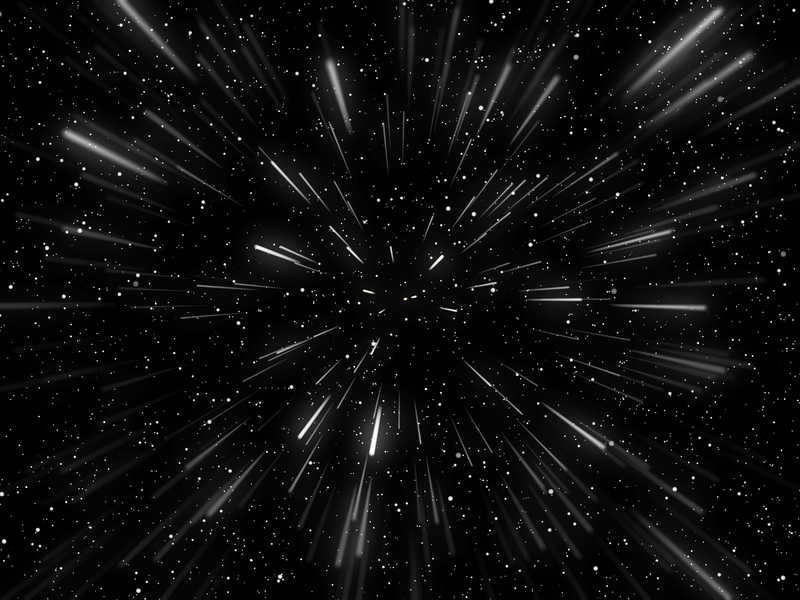
The deformation of objects occurs as a result of the impact of energy and matter, causing changes in the perception of time. The speed and position of an individual can influence the rate at which time passes, leading to variations in the flow of time. However, the question remains: does time differ between the vast expanse of space and our home planet?

The Impact of Deceleration
Time was formulated to facilitate navigation within the realm of space.
Unlike the surface of the Earth, time moves in a completely distinct manner in outer space.
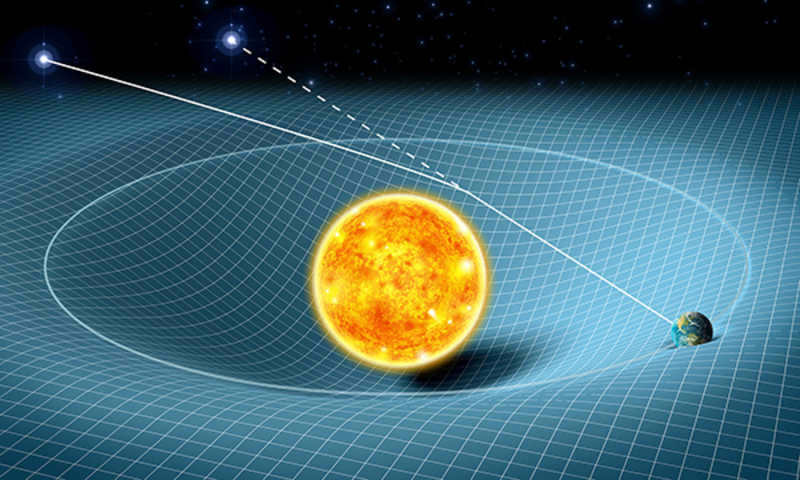
The duration of time spent in space and on Earth is influenced by various factors. These factors include gravity, the rotation of the Earth, the alternation of day and night, and the movement of the Earth around the Sun. Time is measured in hours, minutes, and seconds. However, once an object leaves the surface of the Earth, it is subject to different laws and regulations that govern the passage of time.

In a nutshell, space time and earth time have different rates of passage. However, the question remains: why does this occur? To grasp the reasons behind this phenomenon, one must comprehend the concept of gravitational and relativistic time dilation.
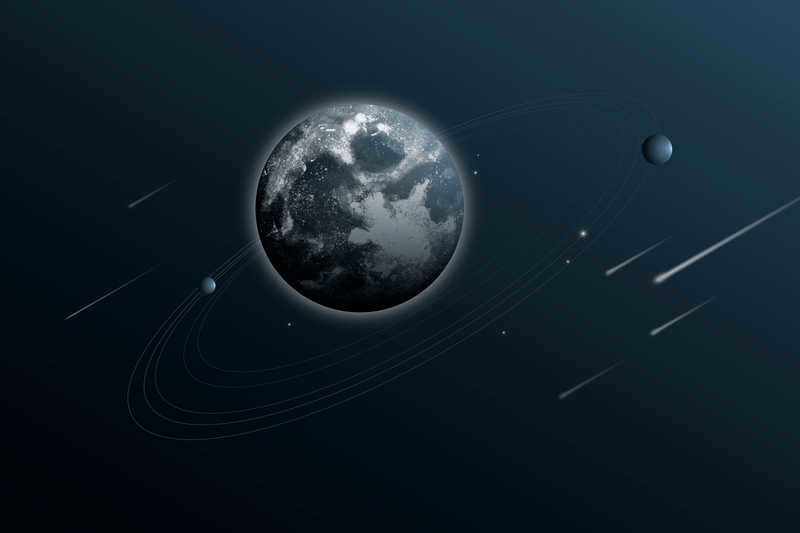
The primary concept behind this phenomenon is that in the vicinity of massive objects, time passes at a slower rate due to the gravitational force exerted by these objects, which causes a bending of time and space. Consequently, as the intensity of gravity escalates, the pace of time decreases.
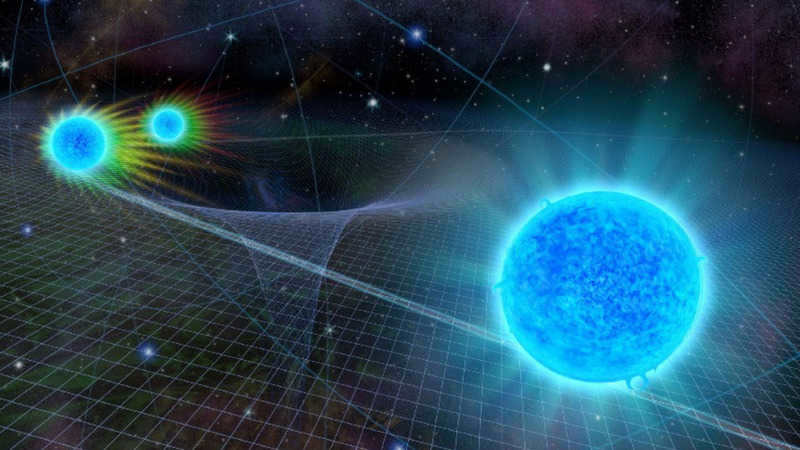
Thus, the time it takes for an object to travel through space is longer when it is closer to the center of the Earth, where gravity is more intense. It can be inferred that in galaxies without stars, there is an absence of a gravitational field.
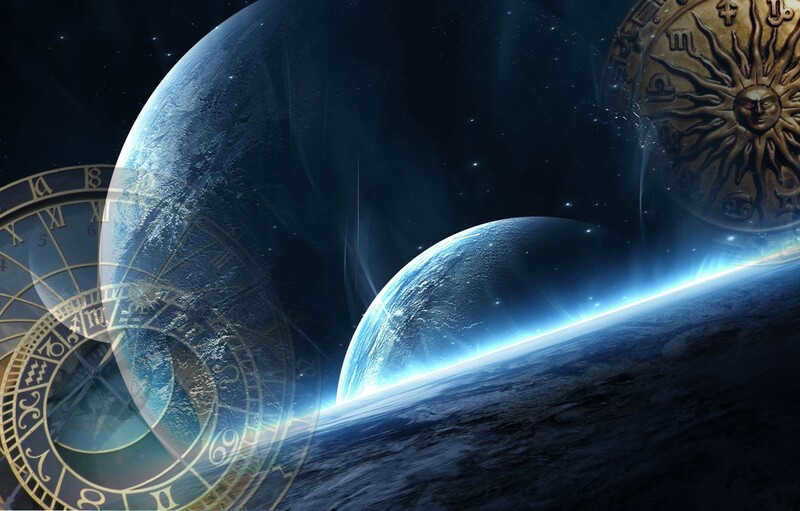
The impact is not experienced worldwide. Even if an individual resided in a cellar or a mine, their aging process could be slightly delayed by a few seconds.
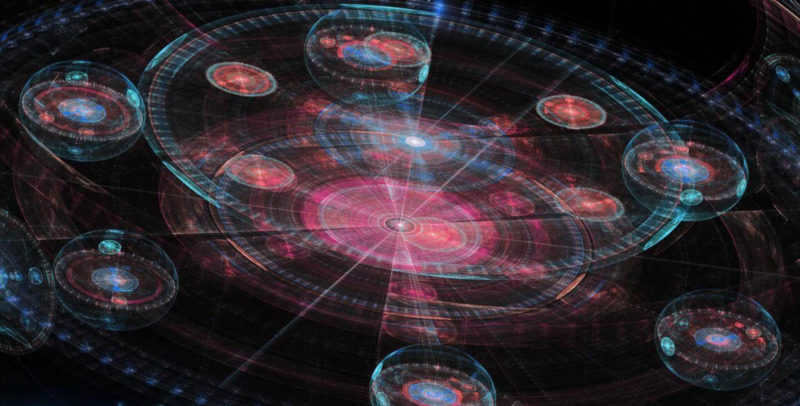
Speeding Up or Slowing Down
Contrary to popular belief, time does not always pass at a constant rate in space. It actually varies depending on the specific location in outer space. In certain areas, time may pass more slowly, while in others it may pass more quickly.
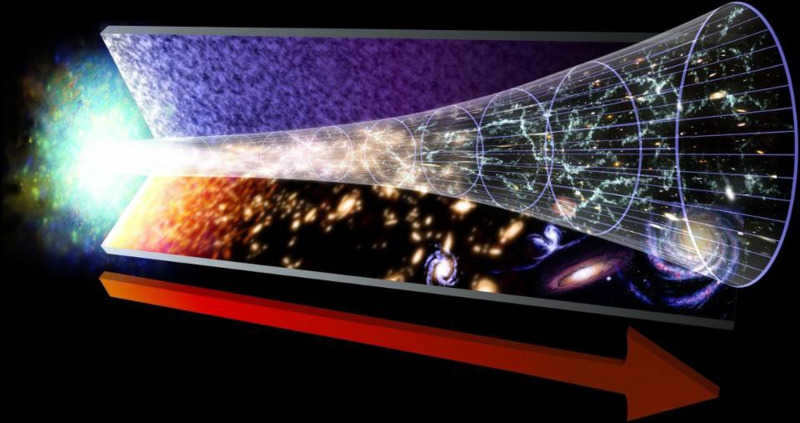
The velocity of an object varies depending on its proximity to different celestial bodies. For instance, in close proximity to black holes, the velocity slows down, while being away from planets, stars, and asteroids results in a faster velocity.
Thus, when determining the movement of an object, it is crucial to consider its velocity.
Deceleration in the context of relativity
The concept at the core of this phenomenon is that as an object moves, its physical processes experience a slowdown. One way to illustrate this is through the well-known “twin paradox” scenario.
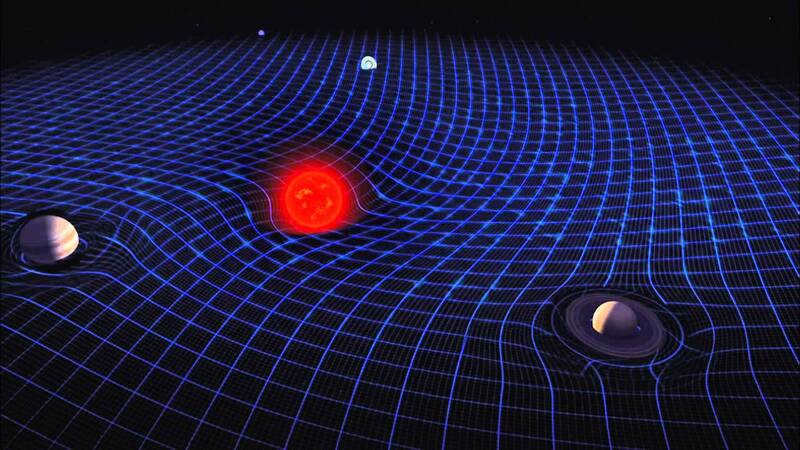
In an interesting scenario, one twin is currently aboard a spacecraft, journeying at an incredibly high velocity that approaches that of light. Simultaneously, the other twin remains on the planet’s surface, experiencing the passage of time at a normal rate. Upon the return of the spacefaring twin, who will have aged a mere 1-2 years, they will be astounded to find that their sibling has aged a staggering 10 years.
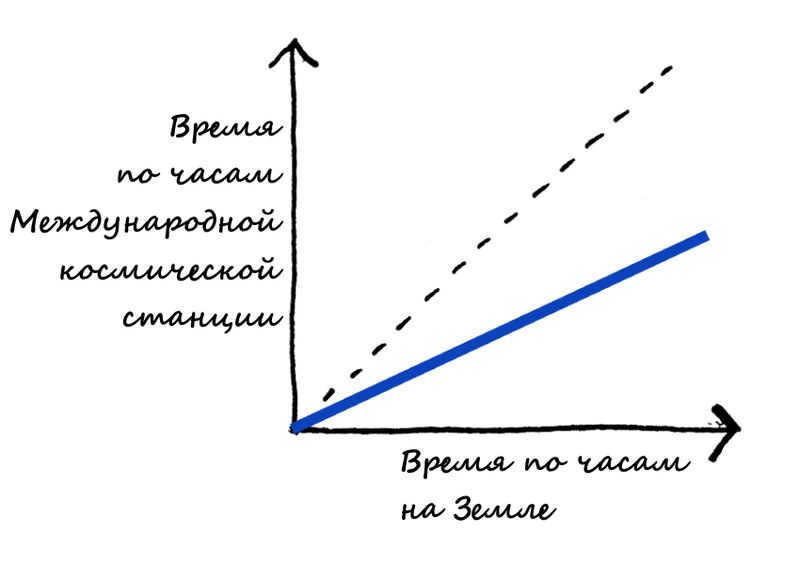
Gravitational Time Dilation
The phenomenon of gravitational time dilation, which refers to the variation in the passage of time between two observers located at different distances from a massive object, is commonly known as gravitational slowing down.
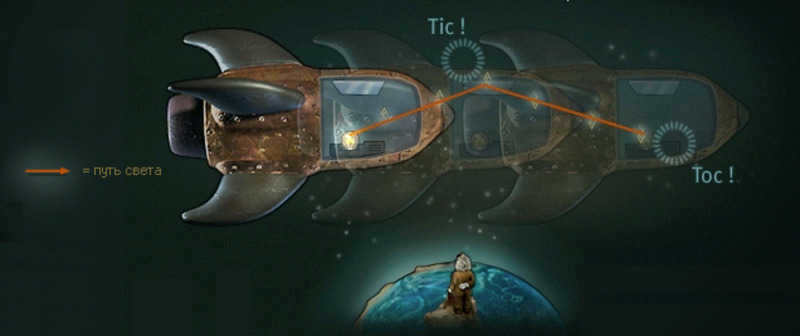
In 1907, A. Einstein made a prediction that was later derived from the theory of relativity regarding reference frames.
The theory of relativity accounts for the variation in the flow of time at different locations, which is described by the time-space tensor.
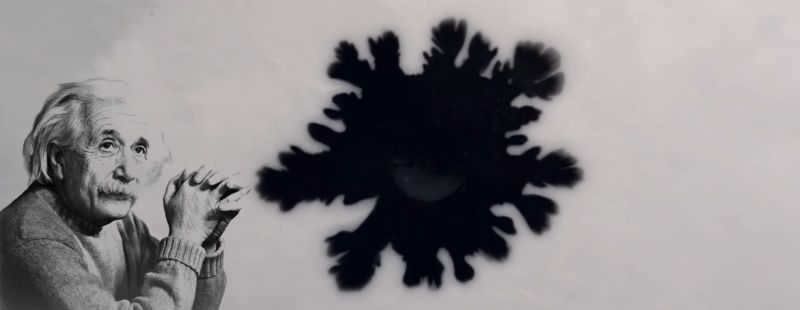
The principle that can be deduced from this observation is that the curvature of space-time is generated by the gravitational field. This phenomenon was officially validated following the Pound-Rebka experiment in 1959.
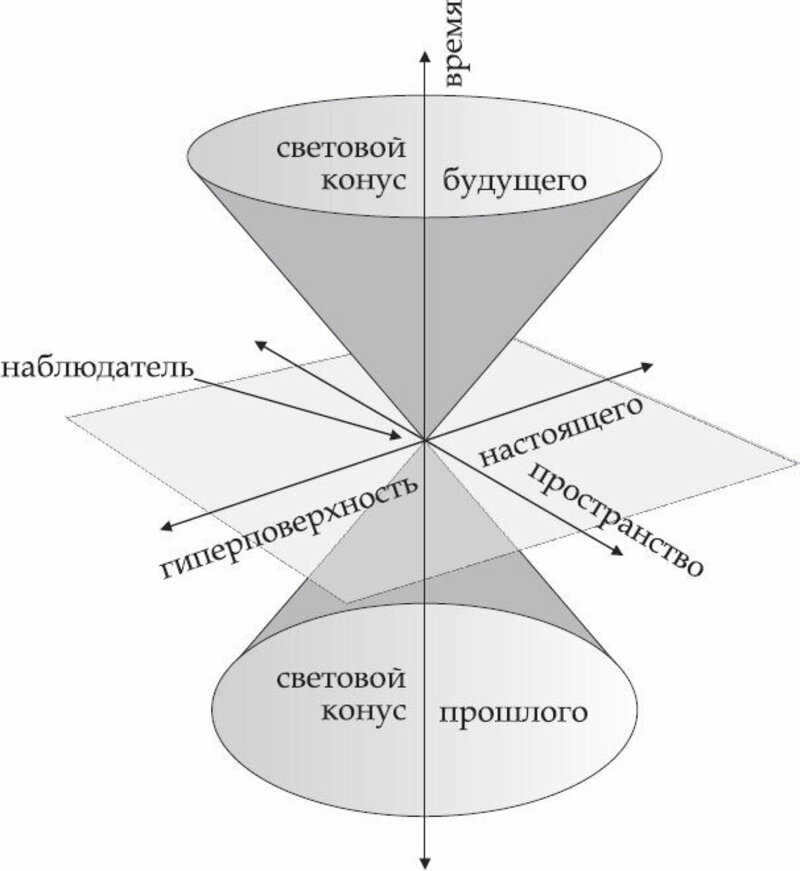
In terms of billions of years, the Earth’s surface is more ancient than 2.5 times its core. Proving this fact would necessitate either an immense gravitational force or an enormous distance from our planet.
Unique Example
In order to demonstrate the sluggishness of the present flow, we will at present employ real-life instances. Researchers have substantiated that the passage of time extends further for an individual soaring in an aircraft compared to individuals at rest on the exterior. The distinction will not be perceivable since it is just a minute fraction of a second.
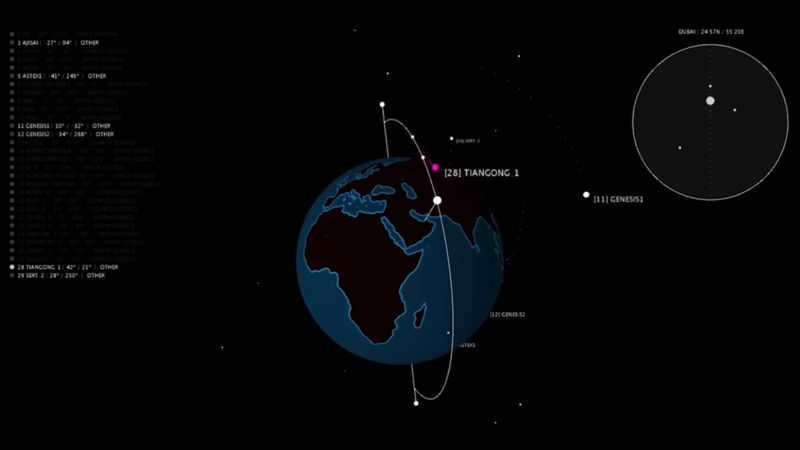
The scenario takes a drastic turn when an object is in motion at a sufficiently high velocity.
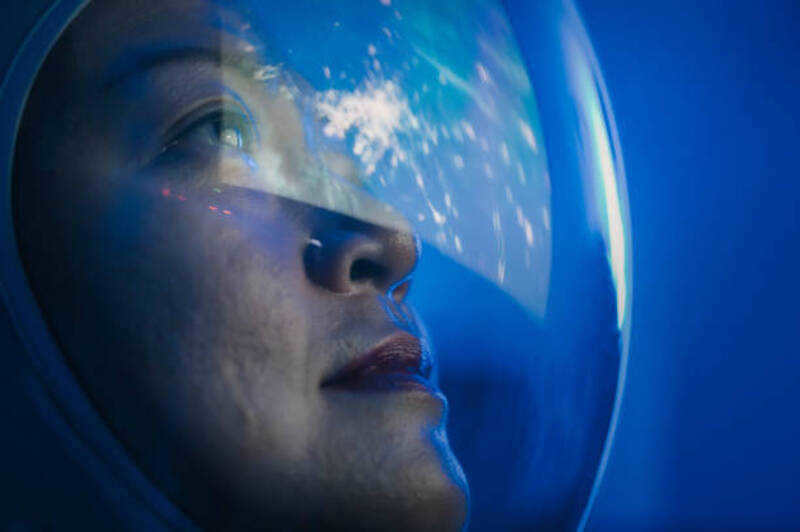
For instance, if a rocket were to travel at the speed of light, it would be capable of traversing a distance in one year that is 100 times or more greater than what can be measured on Earth. However, for the astronaut operating this rocket, the hands on the speedometer would appear to move at a normal pace – only individuals on the planet would observe a slowdown if they were to glance at the clock inside the spacecraft.
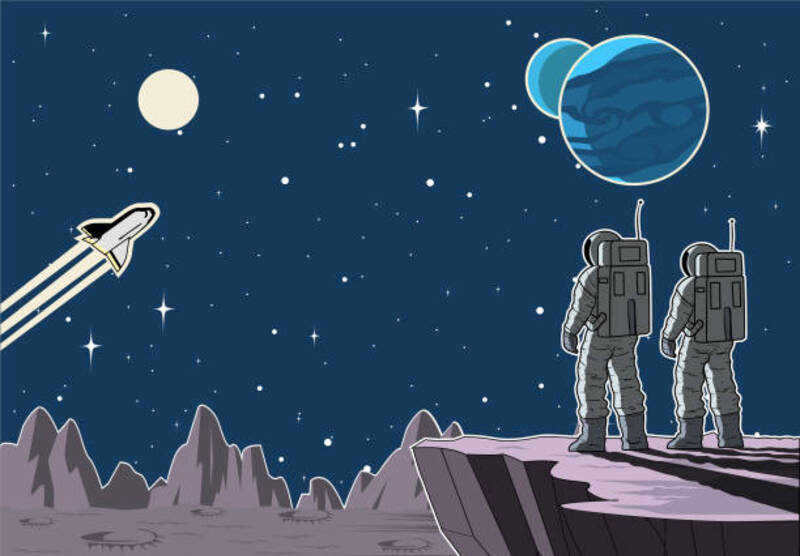
However, in contrast, a spaceman gazing out of a window at Earth and glancing at the timepiece on the spacecraft would perceive that time has decelerated.
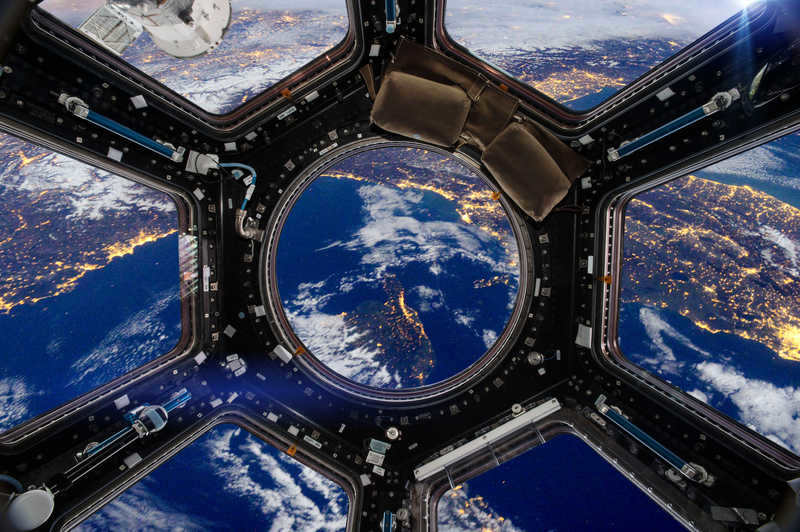
Indeed, the astronaut is able to observe the phenomenon of deceleration. This phenomenon arises due to the immense velocity of the rocket and the discrepancy in position between the starting point on the planet and the spacecraft. This is because the Earth follows a linear trajectory, while the spaceship travels with an accelerating force.
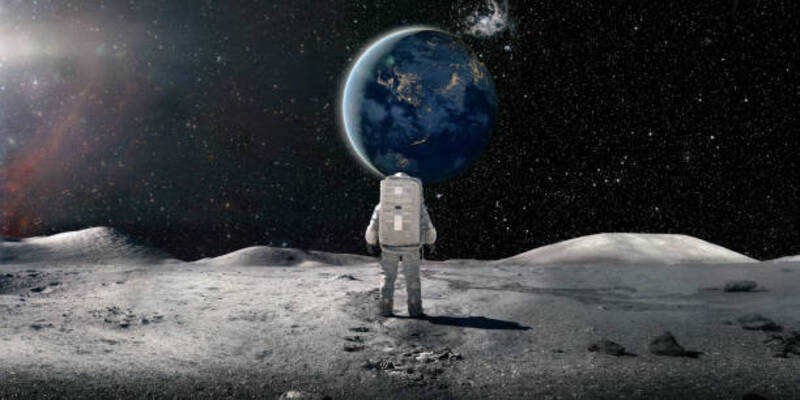
Did you know that the current population of people in space is constantly changing? It’s fascinating to think about the international space station, which is located at an altitude of 420 km. The time difference experienced by astronauts in orbit is just a fraction of a second.
What is the duration of time in space?
As the space station orbits our planet at a velocity of roughly 8 kilometers per second, the question arises: how does time pass aboard the spacecraft?
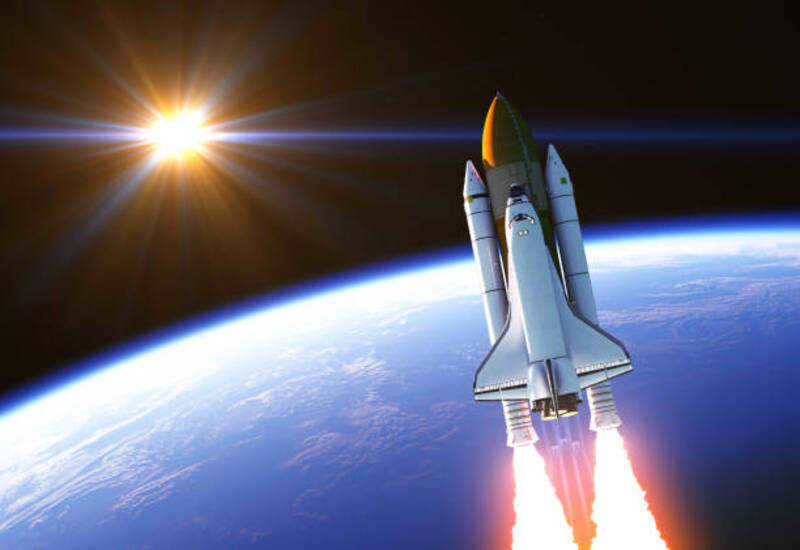
Given the presence of relativistic deceleration, it can be inferred that time passes at a significantly slower rate in the vastness of outer space.
Even those brave souls known as astronauts experience a notable deceleration in the aging process when compared to their terrestrial counterparts.

However, it is intriguing to note that the discrepancy is hardly discernible – following a half-year journey aboard the space station, the time distortion would amount to a mere 0.005 seconds.
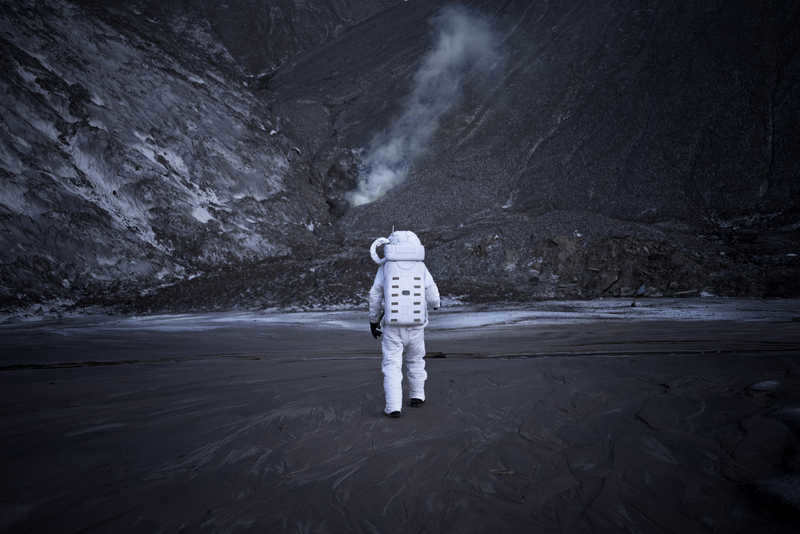
What is the duration of a day in space?
What is the length of a day in space?
According to many references, the time ratio in space is often stated as 1 hour in space being equivalent to 7 years on Earth, or one day in space being equal to 148 years on the Earth’s surface.

This is not actually true. In space, one day is equivalent to 72 months on Earth, or one day in space equals three years on our planet. However, it is important to note that this calculation does not take into account the complexities and imperfections of outer space and the natural world as a whole.
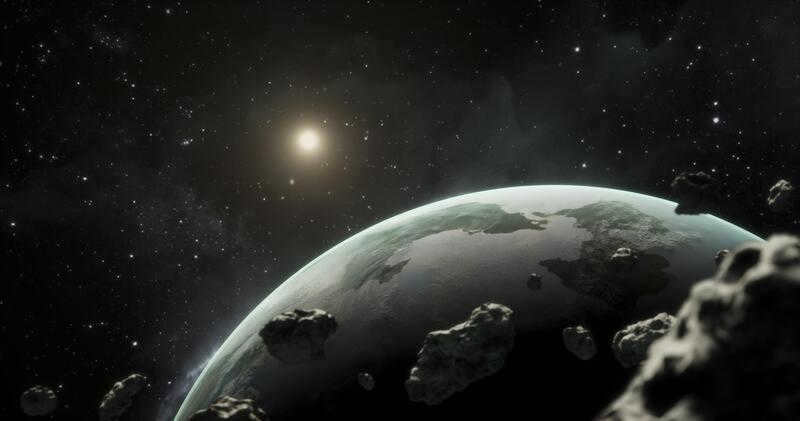
Humans currently in outer space
What is the maximum duration that humans can spend in space? This question remains unanswered by both scientists and science itself. The information provided by each team of astronauts who embark on missions to the space station is eagerly awaited by scientists.
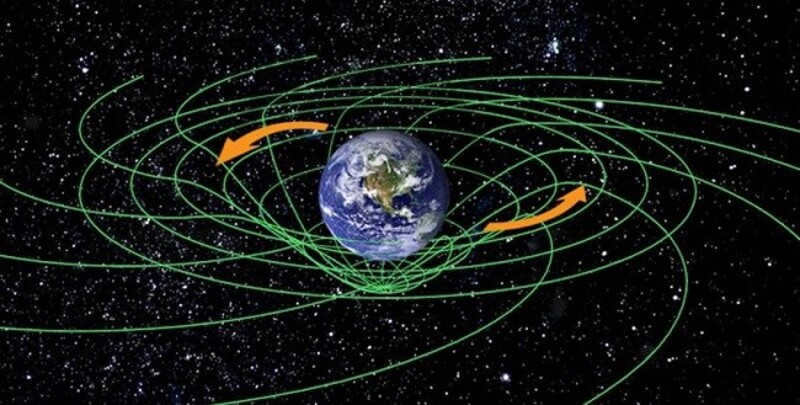
Revising various aspects and drawing new conclusions can be beneficial. At most, how long has an individual spent in space? The current record for the longest stay in orbit is 437 days.
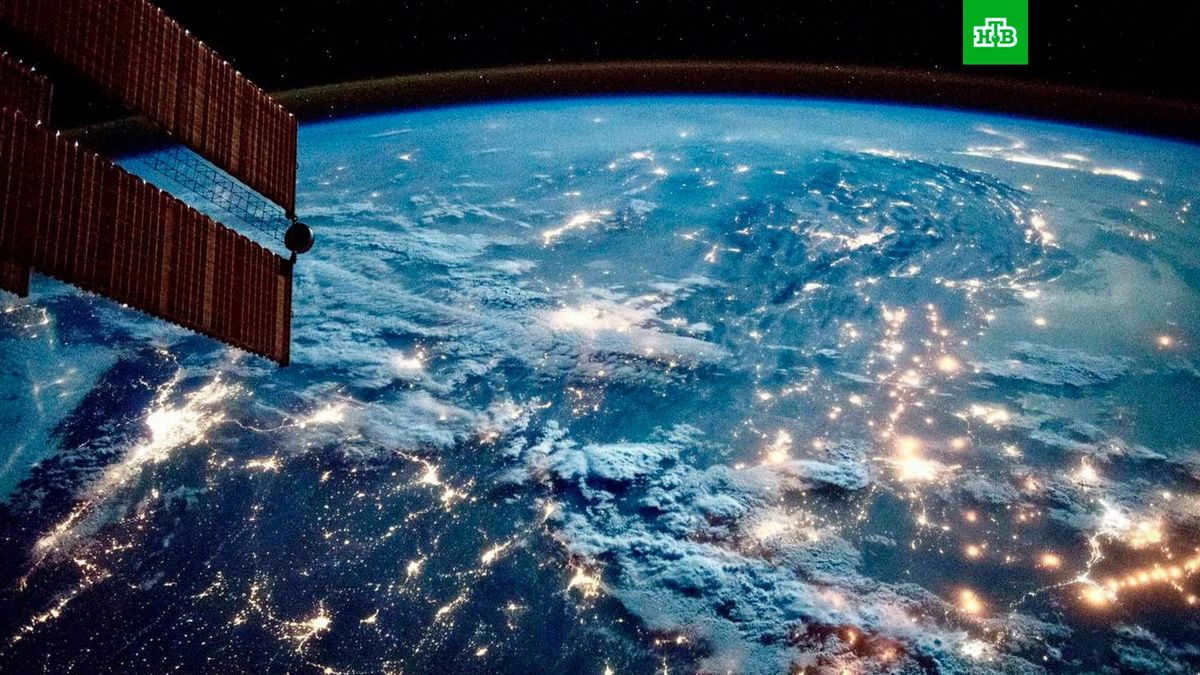
- The record for the number of individuals in the Earth’s orbit has been broken
- The suspect involved in the case of the explosion at a gas station in Dagestan has been apprehended.
- A man from a cafe in Kamchatka claimed that the girl he assaulted was at fault herself
- A movie titled “Witness” about the tragedy in Bucha is being released widely
- “Army-2023”: new weapons and captured equipment were presented in the “Patriot” park
- The military expert from the U.S. assessed the counter-offensive of the Armed Forces of Ukraine as a stage of “bear with it and smile”
- Attack aircraft bombed the fortified positions of the Armed Forces of Ukraine and concealed military equipment
The Earth’s record for the highest number of individuals orbiting simultaneously has been shattered.
Following the launch of the Chinese spacecraft, the number of individuals concurrently orbiting the Earth has soared to 17.
The previous milestone was achieved on September 16, 2021, when a total of 14 people convened in orbit: two Russians, three Americans, one Japanese, and one French astronaut on the ISS, three Chinese astronauts aboard their spacecraft, and four U.S. citizens participating in a private mission aboard the Crew Dragon spacecraft.
Roscosmos stated previously that the nations involved in the International Space Station (ISS) project have yet to reach an official decision regarding the timeline for the ISS’s orbital withdrawal.
Official NTV social media accounts
NTV mobile apps
© NTV Television Company, 1993-2023. All rights reserved.
When using any materials from NTV, it is mandatory to provide a reference (for websites, a hyperlink to www.ntv.ru).
By accessing and using this website, you acknowledge and agree to be bound by the terms of this agreement.
NTV Television Company JSC’s Regulations on the Processing and Protection of Personal Data
The online edition of the NTV media network, “NTV.RU,” is registered with the Federal Service for Supervision of Communications, Information Technology and Mass Media (Roskomnadzor). Certificate of registration of mass media El No. FS 77-69486 dated 25.04.2017.
Name: Founder (co-founders) of the online media outlet “NTV.RU”: Joint Stock Company “NTV Television Company”. The Editor-in-Chief of the “NTV.RU” online media outlet is Demkov K. S. The phone number of the editorial office of the “NTV.RU” online media outlet is +7 (495) 287-72-00. The email address of the editorial office of the “NTV.RU” online media outlet is [email protected].
We will provide you with information about the current and future networks, including whether there is internet on the ISS, what it looks like, and how long it takes to receive messages from Mars.
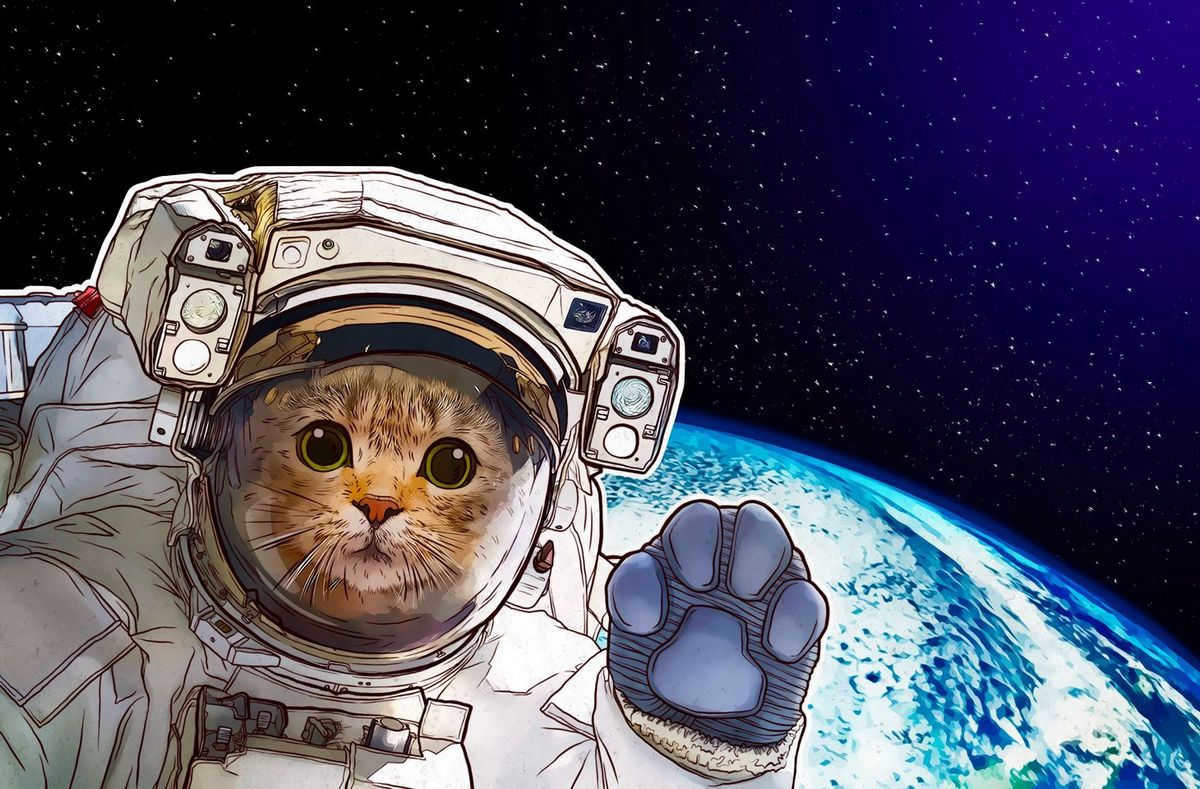
Written by Igor Kuksov on September 11, 2019.
Internet has already become ubiquitous across the globe, including even the most remote corners and the depths of space. It is no longer a surprise to have internet access on airplanes, and even astronauts aboard the International Space Station utilize the web. As space agencies gear up for further exploration, they are also working towards connecting other planets within our solar system to the World Wide Web. The purpose of having internet in space goes beyond work-related needs; it serves as a means for individuals far from their home planet to stay connected with their loved ones. In this article, we will delve into how this technology functions currently and how it will evolve in the future.
In 2010, the International Space Station crew achieved a significant milestone by gaining access to the Internet, thanks to NASA’s provision. To utilize this technology, astronauts establish a satellite connection to a computer in Houston, which functions as a remote desktop, enabling them to browse the web. This method ensures a higher level of safety, as even if a member of the ISS team accidentally opens a malicious link or file, the attackers can only infiltrate the Earth-based computer.
To commemorate the introduction of Internet connectivity on the ISS, NASA astronaut Timothy Creamer became the first person to tweet from space, marking a historic moment.
Russia’s Space Internet
In the near future, Russia has plans to establish an internet connection for its segment of the International Space Station (ISS). To achieve this, they will utilize the Luch system of relay satellites, which is currently undergoing upgrades.
Last year, Russian cosmonauts Alexander Misurkin and Anton Shkaplerov made modifications to the station’s antenna, enabling it to receive large volumes of data from the satellite. In the process, they also set a new Russian record for the longest duration spent in open space – 8 hours and 12 minutes.
Sergey Krikalev, the executive director of Roscosmos for manned space programs, has confirmed that the new equipment has undergone successful testing. This means that the communication between the ISS and the Luch satellites is on the verge of becoming operational.
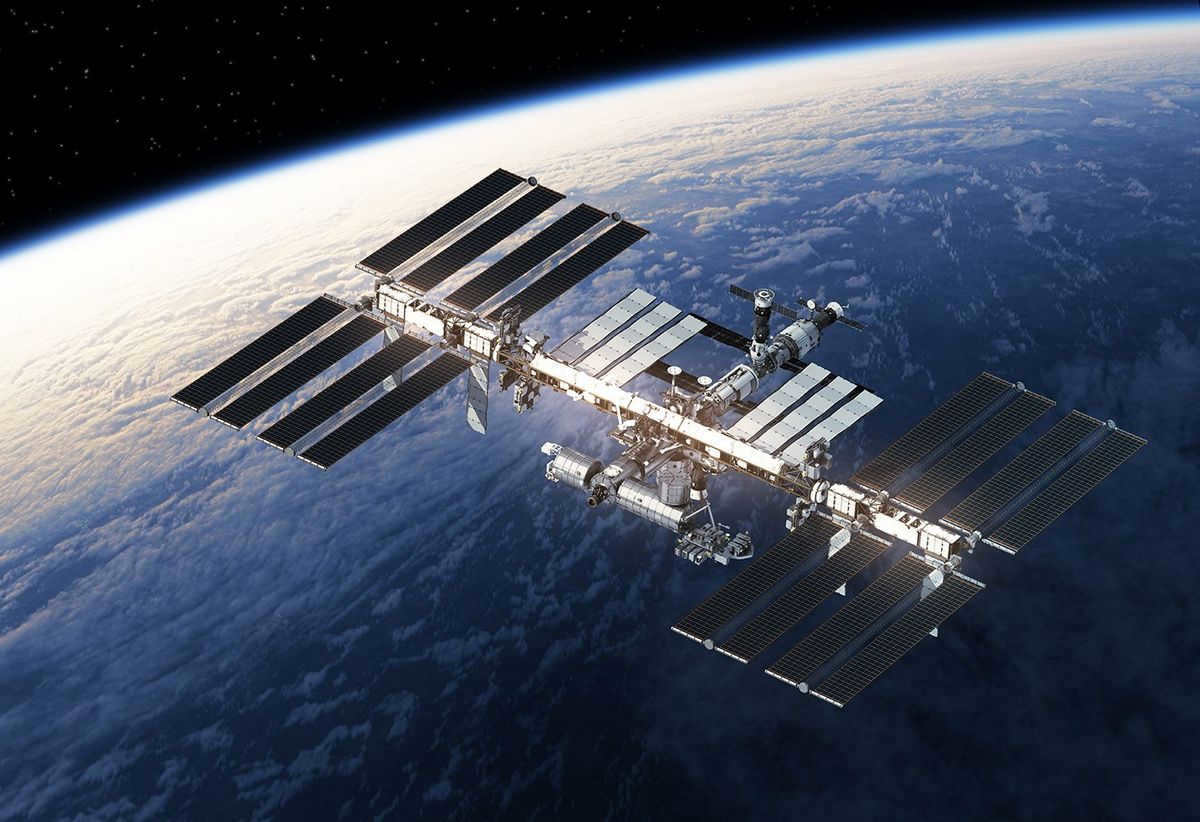
Satellite Intercepts
Naturally, the internet connection on the International Space Station (ISS) is far from being as speedy and consistent as it is on Earth. Unlike traditional wired communication, satellite communication has its own set of advantages – such as the ability to function in areas where wired connections are not feasible – as well as its own set of challenges.
Dealing with High Ping and Slow Speeds
Despite being situated approximately 400 kilometers above the Earth, the data transmitted from the International Space Station (ISS) must cover a much greater distance. Initially, the signal from the ISS is directed upwards towards a transponder satellite positioned at an altitude of around 35.7 thousand kilometers. Only then is it relayed downwards to the ground station for space communications.
All in all, the total distance traveled by the information sent from the ISS and the subsequent response amounts to nearly 150 thousand kilometers, resulting in significant time delays. According to a NASA employee, data from the ISS experiences a delay of approximately half a second, which is approximately 20 times longer than the average delay experienced with cable Internet.
As a consequence, only a small portion of the channel’s bandwidth is utilized for tweets and website requests. Simultaneously, while the satellite has the capability to transmit up to 300 Mbit of data per second to Earth, the speed from Earth to the satellite does not exceed 25 Mbit/s. Overall, the connection on the ISS is comparable in speed to outdated modems.
In addition, the station occasionally moves out of the range of satellites. Out of the hour and a half that the ISS orbits the Earth, there can be up to 15 minutes without any communication at all.
Limited fuel supply
The satellites maintain continuous contact with Earth: they orbit at the same velocity as our planet, remaining in a fixed position above a specific point. However, occasional adjustments to the satellite’s orbit are necessary to prevent it from drifting off and losing communication. This requires the use of fuel for maneuvering. Nevertheless, unlike a car or an airplane, a satellite cannot be brought back to Earth for refueling.
Companies from various countries are exploring methods to refuel satellites directly in space in order to address this issue. Tests for satellite fuel delivery systems are currently being conducted in the American segment of the ISS, as well as by the Canadian company MDA Corporation and the British-Israeli company Effective Space Solutions. Additionally, the European Space Agency (ESA) has developed an engine that can utilize air molecules from the Earth’s upper atmosphere as an alternative to traditional fuel.
Addressing the Issue of Electricity Shortage
The problem of fuel shortage can be partially resolved by utilizing electricity, which offers the advantage of reducing fuel consumption and replenishing energy reserves through solar panels. Furthermore, electricity is essential for communication between spacecraft and Earth. However, there are instances when satellites are obstructed from receiving sunlight due to our planet’s position, forcing them to rely solely on batteries with limited capacity.
A potential solution to this issue, proposed by Russian scientists, involves launching a fleet of robots into orbit. These robots possess the capability to charge satellites that are experiencing energy deficits. They have the ability to convert solar radiation as well as radio signals from Earth into energy. By doing so, they could extend the lifespan of a spacecraft by 1.5 times and eliminate the need for additional batteries and solar panels, thus reducing the overall weight of the spacecraft.
When space transponders are constantly operating at maximum power, they encounter the issue of overheating. Unlike on the planet’s surface, where fans are used to cool computers, there is no air in orbit to assist with cooling. Consequently, despite the fact that space is actually colder than the surface of our planet, dissipating heat from the equipment becomes a much more challenging task.
In order to prevent the satellite from overheating, it will be equipped with radiators – devices that convert heat into radiation. The size of the radiator will depend on the power of the satellite, with more powerful satellites requiring larger radiators. As a result, scientists have developed a 4 x 1 meter radiator to cool down the 25-kilowatt new-generation communication satellites.
Cosmic radiation and its impact on electronics in space
An ongoing challenge faced by spacecraft is the interference caused by cosmic radiation. Unlike on Earth, where the planet’s magnetic field and atmosphere provide some protection, in space there is no such shield. As a result, electronic components used in satellites and spacecraft must be designed to withstand radiation. However, cosmic radiation still poses a significant problem.
Even on the International Space Station (ISS), which is well-protected, laptops often fail prematurely due to the effects of cosmic radiation. Cameras also suffer, with images quickly becoming marred by broken pixels. Furthermore, space radiation can disrupt satellite signals and potentially damage segments of device memory.
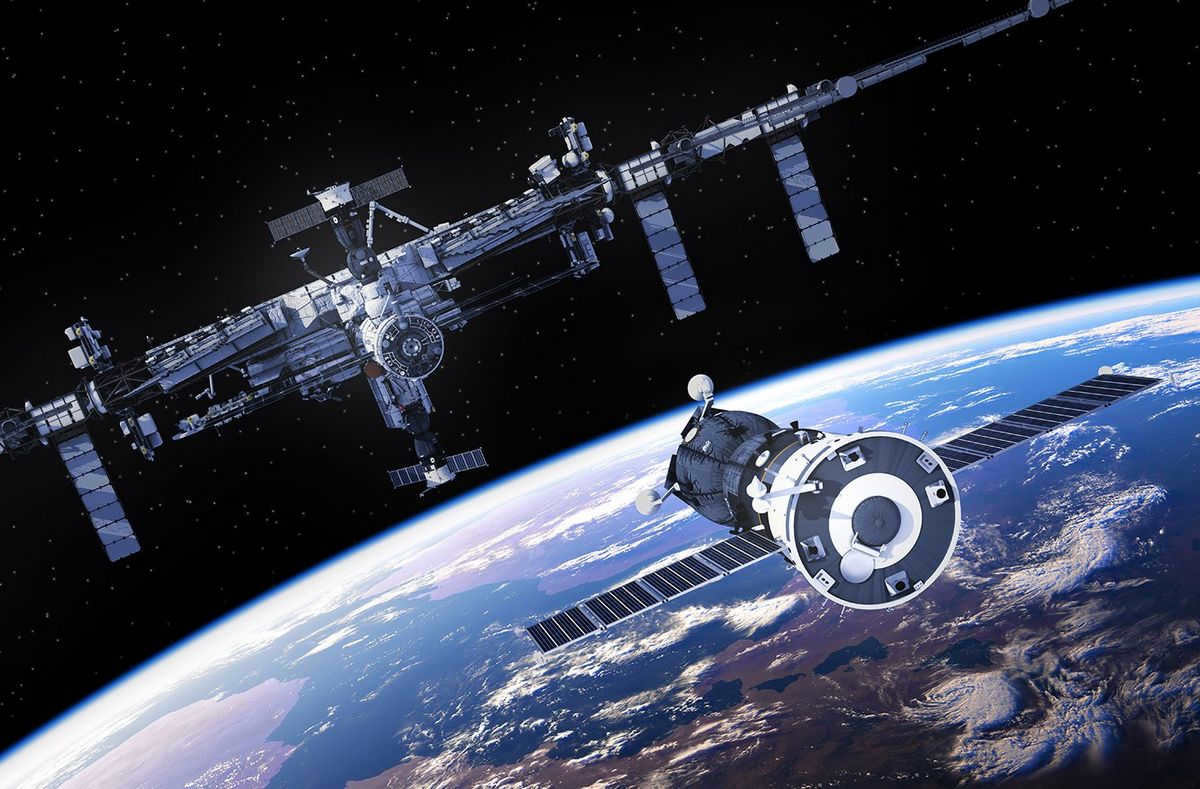
Difference Between Radiation and Cryptography
One of the main reasons why information is transmitted without encryption between Earth and numerous spacecraft is due to radiation exposure. If the memory section where the encryption key is stored gets damaged by radiation, communication will be disrupted.
In addition, this issue is not limited to relay satellites, which are relatively protected and used by the ISS crew to connect to the Internet. Most other vehicles orbiting the Earth do not have the same level of protection.
The absence of encryption is a significant problem, as satellites, similar to conventional computers, are susceptible to attacks from unauthorized individuals. Recently, the European Space Agency initiated an experiment aimed at addressing this issue. Scientists are currently testing two methods to establish secure encrypted communication with satellites while keeping costs reasonable.
- Integrate an additional cryptographic key into the hardware. In the event that the primary key becomes compromised, the system will generate a new key based on the secondary key. However, there is a limited number of such keys that can be generated.
- Implement multiple identical computational blocks. If one of the blocks fails, it is possible to switch to a fully functional backup while the first block is rebooted and restored to working condition.
The apparatus, which will be used to evaluate the effectiveness of these techniques, was sent to the International Space Station in April of this year. It will operate continuously for at least a year. The device is built around a Raspberry Pi Zero, a commercially available mini-computer, which makes it relatively affordable.
Nevertheless, it is important to note that we should not anticipate immediate improvements in satellite communication security. Upgrading existing space-based systems is a complex task that cannot be easily accomplished.
While certain scientists are enhancing the safeguarding and capacity of satellites, others are contemplating the creation of an interplanetary internet. The challenges that must be overcome for this purpose bear many similarities to those encountered by the crew of the International Space Station (ISS), although the magnitude is significantly greater.
For instance, it takes anywhere from 3 to 22 minutes for a signal to reach Mars, depending on the position of the Red Planet in relation to Earth. This is not a mere half-second delay. Furthermore, every two years, there is a two-week interruption in direct communication between Mars and Earth: signals are unable to pass due to the presence of the Sun, which lies between the two planets during this time period.
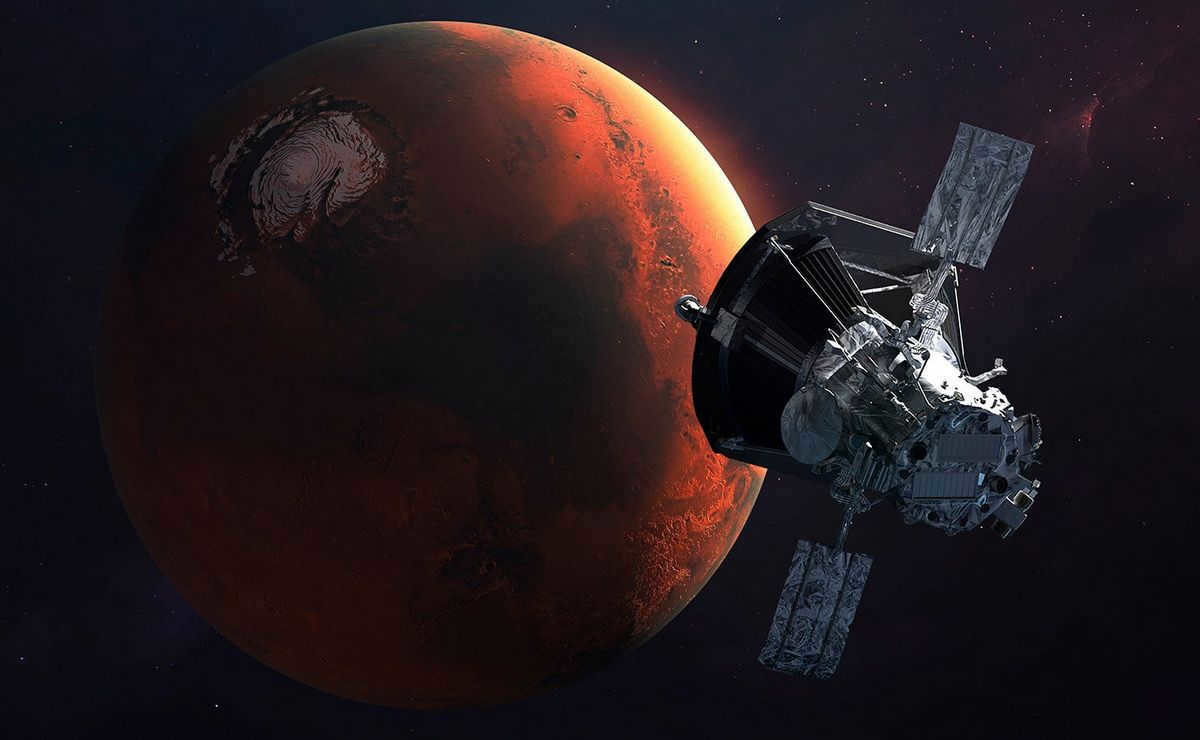
The space Internet has unique characteristics that require alternative communication schemes between celestial bodies. Unlike the terrestrial Internet, the nodes in the space network are constantly moving. To address this challenge, scientists have developed specific data transmission protocols for long delays, higher error rates, and intermittent node availability.
One example is NASA’s Delay/Disruption Tolerant Networking (DTN) model, which allows intermediate nodes like satellites to store information until it can be transmitted to the next node.
- The rejection of current radio wave-based communication with satellites in favor of data transmission using optical (specifically laser) emissions offers several advantages. Firstly, optical communication significantly speeds up data transmission by several times. Secondly, optical receivers and transmitters are more compact and consume less power, making them especially suitable for transponder satellites.
- Satellites can be strategically positioned to transmit signals around the Sun, even when the Earth and Mars (or other planets participating in the Space Network) are on opposite sides of the luminary.

